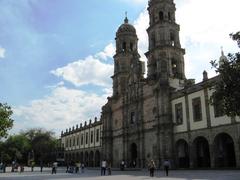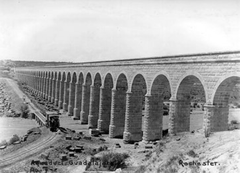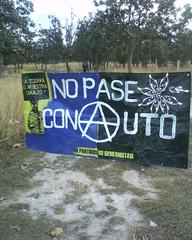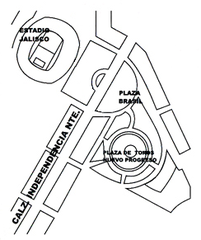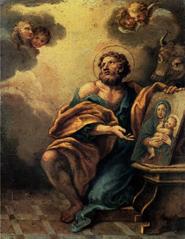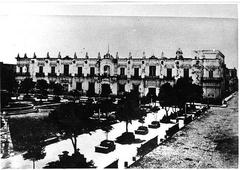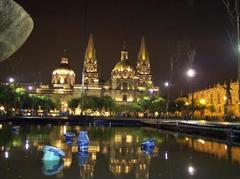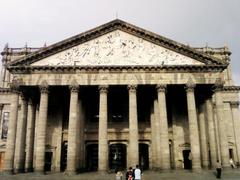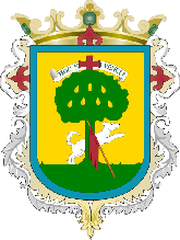
Mexicaltzingo Visiting Hours, Tickets, and Tourist Guide to Guadalajara Historical Sites
Date: 04/07/2025
Introduction: Explore the Heart of Guadalajara in Mexicaltzingo
Situated just south of Guadalajara’s Centro Histórico, Mexicaltzingo is a vibrant neighborhood where centuries of history, indigenous roots, and dynamic culture merge. Founded in the 16th century by Mexica auxiliaries alongside Spanish authorities, this barrio is often called the “Place of the Little Mexicans” (indigenousmexico.org). Today, it offers a unique opportunity to discover everything from colonial architecture and preserved landmarks to bustling markets, festive traditions, and some of Jalisco’s most celebrated cuisines.
This comprehensive guide provides historical context, practical visitor information—including opening hours and ticketing—must-see sites, travel tips, accessibility notes, and safety recommendations. Whether you are a history buff, a foodie, or a cultural explorer, Mexicaltzingo promises an authentic and memorable experience in the heart of Guadalajara (culinarybackstreets.com; ciudadolinka.com).
Historical Overview
Indigenous Roots and the Mexica Legacy
Before Spanish colonization, the area was inhabited by indigenous groups such as the Tecuexes and Cocas. In the 1530s and 1540s, Mexica auxiliaries led by Viceroy Antonio de Mendoza played a pivotal role in the conquest and settlement of the region, especially during the Mixtón Rebellion (indigenousmexico.org). The neighborhood of Mexicaltzingo became a foundational element in Guadalajara’s multicultural development.
Colonial Growth and Architectural Heritage
During the 16th and 17th centuries, Mexicaltzingo integrated into the city’s colonial landscape, contributing to commerce and agriculture. Architecturally, the barrio boasts:
- Templo de Mexicaltzingo: An iconic colonial church blending indigenous and Spanish influences.
- Puente de las Damas: Built in the 1790s, this five-arched stone bridge was both an engineering marvel and a vital crossing for early Guadalajara (ciudadolinka.com).
Modern Transformation and Cultural Continuity
With the arrival of the Camino Real a Colima, Mexicaltzingo became a commercial hub, later experiencing waves of urbanization and architectural innovation. Today, the neighborhood retains its communal spirit through religious festivals, markets, and a thriving food scene.
Key Landmarks and Points of Interest
- Templo de Mexicaltzingo (San Juan Bautista): Central to community life, open daily, with hours typically from 8:00 AM to 7:00 PM (milenio.com).
- Puente de las Damas & Museo de Sitio: The city’s last major colonial bridge, now restored and open as a free historical site, Tuesday to Sunday, 10:00 AM–5:00 PM (ciudadolinka.com).
- Municipal Market of Mexicaltzingo: Famous for its seasonal pitaya fruit market and traditional gastronomy (vibemap.com).
- Foro Independencia & Teatro Diana: Cultural venues hosting concerts, theater, and community events.
Visitor Information
Opening Hours and Ticketing
- Neighborhood Access: Mexicaltzingo is open to the public at all times; there are no entrance fees for strolling its streets and plazas.
- Key Sites:
- Templo de Mexicaltzingo: 8:00 AM–7:00 PM (hours may vary during religious events).
- Puente de las Damas Museo de Sitio: Tuesday–Sunday, 10:00 AM–5:00 PM, free admission.
- Markets: Early morning to evening.
- Cultural Venues: Check websites for event schedules and ticket prices.
Guided Tours
Local operators offer walking tours focusing on Mexicaltzingo’s history, architecture, and gastronomy. Tours typically include visits to the Templo, Puente de las Damas, and the municipal market. Advance booking is advisable, especially during festivals or peak travel seasons.
Accessibility
- Streets: Mostly pedestrian-friendly but may have uneven surfaces due to historic paving.
- Venues: Modern sites like Teatro Diana are wheelchair accessible; historic sites may have limited access.
- Transport: Reachable by public transport (bus, light rail), taxi, or rideshare; about 15 minutes from downtown Guadalajara.
Safety Tips
- Daytime and early evening are best for visits.
- At night, use ride-sharing apps or registered taxis (tagvault.org).
- Keep valuables secure and use common-sense precautions (touristplaces.guide).
Culinary Highlights
Mexicaltzingo is a gastronomic hotspot, best known for local specialties like:
- Carne en su jugo: A savory stew of beef, bacon, and tomatillo broth. Carnes en su Jugo Mexicaltzingo 1617 is a must-visit for this dish (culinarybackstreets.com).
- Torta ahogada: Spicy pork sandwich, a Guadalajara classic.
- Pitaya fruit: Sought-after during the spring market.
- Tejuino: Traditional fermented corn beverage.
Dining venues range from market stalls and family-run cafes to destination restaurants. Many eateries are cash-only; carry pesos and small bills.
Community and Festivals
Annual traditions—such as the patron saint feast, religious processions, and mariachi performances—enliven the plazas and attract locals and visitors alike (hollymelody.com). The spring pitaya market is a unique event not to be missed.
Suggested Itinerary
- Morning: Breakfast at a local café, stroll Calle Manzano and visit the municipal market.
- Midday: Explore the Templo de Mexicaltzingo and Puente de las Damas.
- Afternoon: Enjoy lunch at Carnes en su Jugo Mexicaltzingo 1617; explore plazas and murals.
- Evening: Attend an event at Foro Independencia or Teatro Diana; use ride-share for safe transport after dark.
Travel Tips
- Best visiting months: October to May (cooler, less rain) (waywardblog.com).
- Spanish is the primary language; basic greetings are helpful.
- Dress modestly for church visits and respect local customs during festivals.
- Carry bottled water and practice standard food safety.
Nearby Attractions
Enhance your trip by visiting:
- Guadalajara Cathedral & Hospicio Cabañas: Iconic historical sites and UNESCO World Heritage locations.
- Analco, Mezquitán, Tetlán: Other traditional barrios with unique flavors and histories.
Frequently Asked Questions (FAQ)
Q: Are there entrance fees for Mexicaltzingo?
A: No, public spaces are free; some cultural events may have ticket fees.
Q: What are the main visiting hours?
A: Neighborhood and markets: early morning–evening. Key landmarks: Templo (8:00 AM–7:00 PM), Puente de las Damas (10:00 AM–5:00 PM, Tue–Sun).
Q: Is the area wheelchair accessible?
A: Some streets are uneven; modern venues are accessible.
Q: Are guided tours available?
A: Yes, book with local tour operators.
Q: Is Mexicaltzingo safe?
A: Generally safe during the day; take precautions at night.
Visual Highlights
Alt text: Puente de las Damas, a colonial five-arched stone bridge in Mexicaltzingo, Guadalajara, illuminated by sunset light.
Images of carne en su jugo, vibrant murals, and the bustling pitaya market are recommended for an enhanced travel experience.
Internal Resources
Summary and Visitor Recommendations
Mexicaltzingo is a living testament to Guadalajara’s layered past—combining indigenous legacy, colonial architecture, and vibrant community life. With free access, well-maintained sites, and immersive festivals, it is an accessible destination for all visitors. Local markets, renowned eateries, and ongoing heritage preservation efforts ensure Mexicaltzingo remains a dynamic part of Jalisco’s cultural fabric (ciudadolinka.com; culinarybackstreets.com).
For an enriching visit, plan ahead, take a guided tour, and explore at your own pace. Download the Audiala app for personalized audio tours, insider tips, and real-time updates to make the most of your trip.
References and Further Reading
- Los Fundadores de Guadalajara, 2023, Indigenous Mexico
- Puente de las Damas: Un Triunfo para el Barrio de Mexicaltzingo, Ciudad Olinka
- Carnes en su Jugo Mexicaltzingo 1617, Culinary Backstreets
- Mexicaltzingo de Pueblo de Indios a Barrio Histórico, Milenio
- Guadalajara Interesting Facts & Culture Information, Hollymelody
- WaywardBlog.com - Guadalajara Travel
- PlayasyPlazas.com - Guadalajara Travel Guide
- TheGoGuy.com - Guadalajara Activities
- Tourist Places Guide
- TagVault
- Travel Safe Abroad
- Vibemap - Mexicaltzingo
- Guadalajara Secreta
- Gaceta UDG
Official Tourism Links
Call to Action
Ready to discover Mexicaltzingo and Guadalajara’s cultural treasures? Download the Audiala app for guided tours and up-to-date travel information. For more guides and inspiration, explore our website and follow us on social media!

